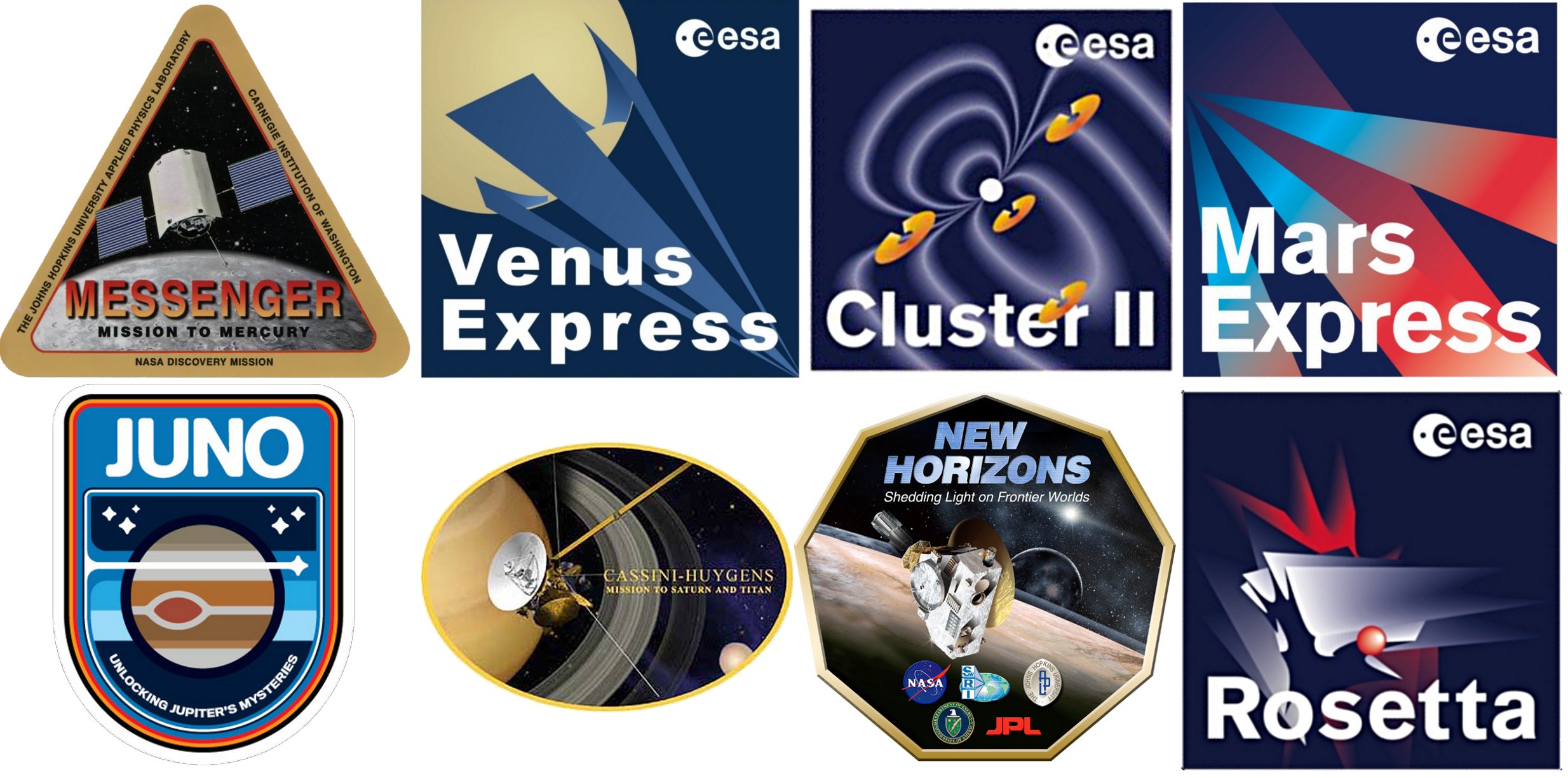Our research topics: object by object
For each Solar system object, we are interested in several scientific topics, with emphasis on the interpretation of the complex datasets recorded by instruments onboard space missions. As such, we are currently involved on several instruments onboard ESA missions at a co-Investigator level.
- Comets
Comets are among the most enigmatic objects in the Solar System. Representing relatively unprocessed material from 4.5 billions years ago -when the solar system was created-, they may also carry the key to understanding the evolution of the entire solar system, motivating the metaphor of cosmic "Rosetta stones". Formed in the outer part of the Solar System and then knocked out of their original orbit by the perturbing presence of Jupiter, they are mainly composed of ice (water H2O, carbon monoxide and dioxide CO and CO2) mixed with solid particles (dust). All comets possess when drawing close to the Sun a dust tail and a plasma tail with typical scales of about 105km, which have never been investigated on a long-term basis.
From 6/08/2014, the Rosetta spacecraft has started its unique year-and-a-half survey of the environment of comet 67P/Churyumov-Gerasimenko. Rosetta is a mission for the history books and has gathered many firsts on its 10-year long journey to its target: the first to rendez-vous with a comet, the first to orbit a comet’s nucleus, the first to land and analyse in situ the composition of the nucleus (12 November 2014) and the first to make a long-term survey of a cometary plasma environment on its way to the inner Solar System (2014-2015). The group is involved more particularly in the Rosetta Plasma Consortium (RPC), and its ion mass spectrograph ICA (Ion Composition Analyser), built and operated in IRF Kiruna (Sweden). The nominal mission is planned until December 2015.
Modelling aspects include the study of mass-loading effects, the magnetic environment of the comet, the physico-chemistry of the coma and time-dependent phenomena.
- Mars/Venus
The planet Mars possesses a thin CO2 atmosphere, a correspondingly tenuous ionosphere and remnant crustal magnetic field anomalies scattered on the Southern hemisphere. Venus on the other hand has a dense, turbulent CO2 atmosphere, but no magnetic field, either intrinsic or crustal. Because of the lack of an intrinsic magnetic field and hence a full-fledged magnetosphere, Mars and Venus are now subject to a comet-like solar wind interaction and atmospheric erosion.
Several missions of interest to both objects are the following:
- Mars Express (MEX), ESA’s first mission to the Red Planet, was launched in 2003, and has been successfully monitoring Mars’ plasma environment for more than 10 years. Discoveries and results include Mars' UV aurora-like structures, the confirmation of the presence of water in the subsurface, and the characterisation of current atmospheric escape mechanisms. The group is involved in the ASPERA-3 particle detector, built and operated in IRF Kiruna (Sweden). As of October 2014, the NASA spacecraft MAVEN will complement MEX observations and will offer a unique two-point measurement vantage view of Mars' magnetosphere-ionosphere couplings.
- Venus Express (VEX), launched in 2005 by ESA, is equipped with a similar scientific payload as MEX, such as ASPERA-4 (IRF Kiruna). Results include the first temperature map of the planet, the detection of hydroxyl radicals OH and ozone O3 in the atmosphere.
Modelling aspects for these two objects include the study of mass loading effects, the formation of magnetic barriers around them, the physico-chemistry of the upper atmosphere, as well as, for Mars, the impact of magnetic crustal anomalies on the ionosphere-magnetosphere dynamics.
- Mercury
- Jupiter
- The Moon

For each object its space mission, top left to bottom right: Mercury, Venus, Earth, Mars, Jupiter, Saturn, Pluto-Kuiper belt, comets, with emphasis on ESA missions. © ESA, NASA
